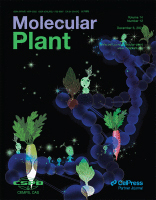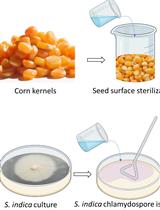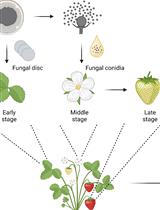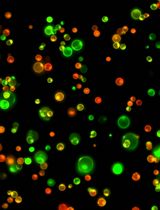- EN - English
- CN - 中文
14C-paraquat Efflux Assay in Arabidopsis Mesophyll Protoplasts
拟南芥叶肉原生质体中的14C-百草枯外排试验
(*contributed equally to this work) 发布: 2022年09月20日第12卷第18期 DOI: 10.21769/BioProtoc.4512 浏览次数: 1543
评审: Yingnan HouAnonymous reviewer(s)
Abstract
Weeds compete with crops for growth resources, causing tremendous yield losses. Paraquat is one of the three most common non-selective herbicides. To study the mechanisms of paraquat resistance, we need to trace the movement of paraquat in plants and within the cell. 14C is a radioactive carbon isotope widely used to trace substances of interest in various biological studies, especially in transport analyses. Here, we describe a detailed protocol using 14C-paraquat to demonstrate paraquat efflux in Arabidopsis protoplasts.
Keywords: 14C-paraquat (14C-百草枯)Background
Paraquat (PQ), a non-selective broad-spectrum herbicide, has been widely used in weed control. It mainly acts on plant green tissue and is relatively safe for soil microorganisms and plant roots (Huang et al., 2019). It competes for electrons from the photosynthesis system I (PS I) and reacts with oxygen, producing a large quantity of reactive oxygen species (ROS) that destroy the photosynthesis system and ultimately kill plants (Apel and Hirt, 2004). However, with the heavy use of PQ, resistant weeds have emerged (Hawkes, 2014). Through extensive studies of PQ-resistant weeds and Arabidopsis, several molecular mechanisms of PQ resistance have been unraveled. These include disrupted PQ transport that blocks it from reaching its target, PQ sequestration into the vacuole and apoplast, enhanced ability to scavenge ROS, and PQ detoxification (Chen et al., 2009; Fujita et al., 2012; Xi et al., 2012; Li et al., 2013; Luo et al., 2016; Lv et al., 2021; Xia et al., 2021; Huang et al., 2022; Nazish et al., 2022).
To study the function of the MATE transporter DTX6, we designed an experiment using 14C-paraquat and Arabidopsis protoplasts to confirm its PQ-exporting activity from cytosol to apoplast, which assisted us in revealing the PQ resistance mechanism via sequestration.
Materials and Reagents
50 mL centrifuge tube with round bottom
2 mL centrifuge tube with round bottom
70 μm Nylon mesh (EMD Millipore, CLS431751)
3–4 weeks old Arabidopsis plants
Scintillation fluid (Perkin-Elmer, Waltham, catalog number: 6013321)
14C-paraquat (American Radiolabeled Chemicals Inc. ARC 1311). Store at -20 °C
NaCl (Sinopharm Chemical Reagent Co., Ltd., CHINA, CAS: 7647-14-5)
CaCl2 (Sinopharm Chemical Reagent Co., Ltd., CHINA, CAS: 10043-52-4)
KCl (Sinopharm Chemical Reagent Co., Ltd., CHINA, CAS: 7447-40-7)
MES (SIGMA, USA CAS: 1266615-59-1)
W5 solution (see Recipes)
Equipment
Centrifuge with temperature control (Allegra X-22R Benchtop Centrifuge, Beckman Coulter, Indianapolis, USA)
Automated cell counter (IC1000, Shanghai RuiYu Biotech Co. Ltd., Shanghai, CHINA)
Ventilation cabinet (YKD-DAT004F, Wuxi Safoo Safety Equipment Co. Ltd., Wuxi, CHINA)
Scintillation vial (Perkin-Elmer, Waltham, USA)
Liquid scintillation counter (Tri-Carb 2910 TR, Perkin-Elmer, Waltham, USA)
-20 °C freezer
Procedure
文章信息
版权信息
© 2022 The Authors; exclusive licensee Bio-protocol LLC.
如何引用
Xia, J. Q., Liu, Q. Q. and Xiang, C. B. (2022). 14C-paraquat Efflux Assay in Arabidopsis Mesophyll Protoplasts. Bio-protocol 12(18): e4512. DOI: 10.21769/BioProtoc.4512.
分类
植物科学 > 植物生理学 > 生物胁迫
细胞生物学 > 细胞信号传导 > 发育
您对这篇实验方法有问题吗?
在此处发布您的问题,我们将邀请本文作者来回答。同时,我们会将您的问题发布到Bio-protocol Exchange,以便寻求社区成员的帮助。
Share
Bluesky
X
Copy link













